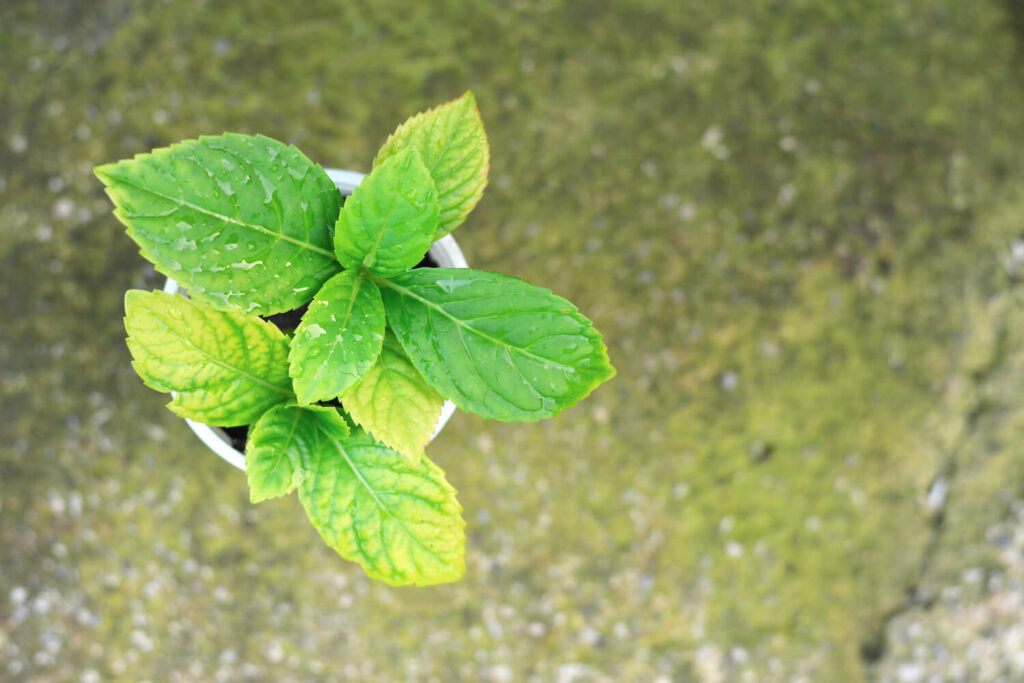Hydrangea Leaves Turning Yellow for Beginners
A Biased View of Hydrangea Leaves Turning Yellow
Table of ContentsThe 7-Minute Rule for Hydrangea Leaves Turning YellowUnknown Facts About Hydrangea Leaves Turning YellowThe smart Trick of Hydrangea Leaves Turning Yellow That Nobody is Talking AboutAll About Hydrangea Leaves Turning YellowFacts About Hydrangea Leaves Turning Yellow UncoveredHydrangea Leaves Turning Yellow for Beginners
One possibility is that the plant is not getting enough sunlight. Throughout the winter months, the days are shorter, and the sunlight is not as extreme, so make certain to place your Hydrangea in a spot where it will access the very least 6 hours of sunshine each day. An additional reason for Hydrangea yellow leaves in winter months can be way too much water.Ultimately, the leaves may be transforming yellow as a result of temperature stress and anxiety. Hydrangeas like cooler temperature levels, so if the plant remains in an area that obtains also hot or as well cold, the leaves will transform yellow. If you assume temperature anxiety could be the issue, attempt moving your Hydrangea to a different place or shielding it from the components with a burlap cover.

The Main Principles Of Hydrangea Leaves Turning Yellow
In the springtime when the mercury stays reasonably low, they'll do fine. When points warm up over the summer nevertheless, time invested in the very early afternoon rays can create unimaginable damage.: Grow your hydrangeas in an area where they'll get sunshine in the mornings or evenings, yet not throughout the peak hours.
Wilting is brought on by absence of moisture, suggesting there are a couple of good techniques to make use of to stop this from taking place - Hydrangea Leaves Turning Yellow. Give your hydrangeas a healthy and balanced glug of water every few days when the temperatures are climbing high, and deal with the dirt to better maintain moisture. After sprinkling, a dab of mulch around the base of each plant need to aid with this by maintaining wetness in the dirt

6 Easy Facts About Hydrangea Leaves Turning Yellow Described
As a general general rule, we suggest getting rid of leaves when they are 50% brown or higher. While browning triggered by any reason can't be reversed, taking the restorative action explained above will sites motivate the plant to expand brand-new fallen leaves so the damaged leaves either diminish naturally or can be eliminated by the garden enthusiast.
Hydrangeas need to be sprinkled just when the top few inches of soil are dry, and should be given a detailed saturating each time. Underwatered hydrangeas are likely to have yellow, wilting, and drooping leaves. Increase the regularity and quantity of watering for your hedge to aid address this problem. Hydrangeas choose fairly moist (yet not soaked) soil, so give the roots an excellent soaking and enable water to be soaked up into the soil prior to using a lot more.
The method you repair hydrangea leaves turning yellow depends on the vital problem causing the yellow leaves. This can be difficult to identify, but when you do you will have the ability to readjust your plant care accordingly to look after the issue. Hydrangea Leaves Turning Yellow. As pointed out previously, an usual issue with hydrangeas is nutrient deficiencies
Some Of Hydrangea Leaves Turning Yellow
Throughout the peak growing period, you need to water at a rate of concerning 1 inch per week. If you are worried regarding not correctly sprinkling your hydrangeas, there are a number of things you can do. Adding mulch to the base of the plants over the root area help to control the temperature around the bush and preserve water in the soil.
You can acquire and install simple watering globes. Watering worlds hold water in them and slowly release this water into the soil as the ground ends up being completely dry. Merely load the globe with water, stick the spout into the dirt within the root area near the base of the plant, and leave it in area till all the water is gone.
If it is as well severe, some plants will never recover from transplant shock and will continue to decrease up until they pass away. Lessen transplant shock by consisting of as numerous roots as possible when digging up your plant to relocate. Make sure to offer even more water than normal in the weeks adhering to growing to aid your plant recover and grow new roots.
Hydrangea Leaves Turning Yellow Can Be Fun For Everyone

To stay clear of spreading fungal illness, be certain to thouroughly clean and disinfect any pruning tools before and after use. You can try to flush the roots with water to eliminate excess fertlizer.
Your hydrangea plant likes well-drained, damp soil. If the pot has poor water drainage, or your dirt is flooded, the leaves will look here begin to transform yellow.
If you don't sprinkle your hydrangea plant for even more than a see page week, the fallen leaves will begin transforming yellow. Fungal conditions that strike the plants have a tendency to show indications on the origins and the fallen leaves of the plant.
The Ultimate Guide To Hydrangea Leaves Turning Yellow
Root rot takes place when microorganisms take up the origin cells as hosts and quit the cell from working. Otherwise cared for, this illness can ultimately lead to the plant dying. Fallen leave spot is one more fungal illness that can target hydrangea. It results in the leaves transforming yellow and the look of brown and purple areas on the leaves.